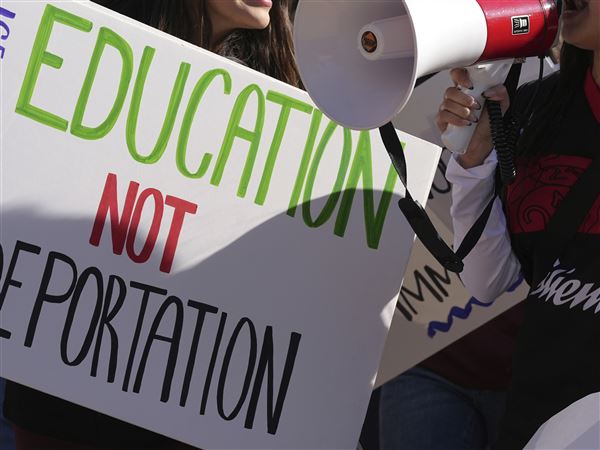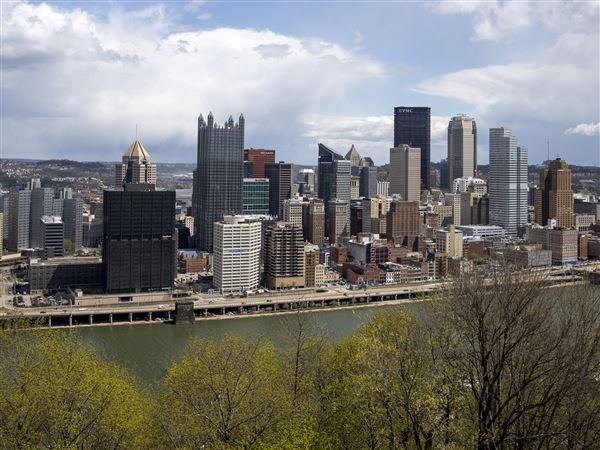County Executive Sara Innamorato’s bid to raise property taxes, which sounds more extravagant than it will be in practice, represents a necessary response to a looming budget crisis and should be given due consideration by County Council. If it is true, as council President Pat Catena, D-Carnegie, has said, that the 2.2 mil boost is “dead on arrival,” then Ms. Innamorato should earn her negotiating spurs by striking a deal that funds essential county services while making strategic cutbacks.
But the truth is that it will be hard to do if council doesn’t get over its skittishness about the tax hike. With increases in the cost of providing services and the expiration of federal pandemic relief funds, along with a property tax rate that hasn’t changed in a dozen years and a looming (and expensive) countywide real estate reassessment, it will be impossible to fund the government — including refilling the county’s reserves — without a tax increase that approaches 2 mils.
At the same time, there are homeowners across the county — especially those on fixed incomes — for whom even a small tax increase would be a hardship. In the negotiations between Ms. Innamorato and council, we hope they will consider a more generous increase in the homestead exemption, which lowers taxes for those who live in the properties they own, even if that means a slightly higher overall tax hike.
No avoiding it
Ms. Innamorato’s proposal, which amounts to a 46.5% increase in county property taxes, certainly sounds extreme, and the county executive may well pay a political price for it. But it would be far more reckless, from the perspective of good government and fiscal prudence, to pretend like there isn’t a problem — which is the course the Gainey administration has charted.
The problem is, as usual, at once simple and complex. Former county executive Rich Fitzgerald successfully avoided tax increase during his terms in office due to decent economic growth and an unwillingness to spend so much that a tax increase was needed. But the truth is that Mr. Fitzgerald would have had to raise taxes in his final term, as growth stagnated and costs increased, were it not for the nearly $600 million in federal COVID relief funds Allegheny County received.
Like in the city, much of that money went to the day-to-day operation of county government, including avoiding layoffs and maintaining levels of service that would have been impossible without those funds. But at the end of this year, the federal aid can no longer be used for operating expenses.
Among the costs the county will struggle to pay without a significant tax increase are those for the Kane Community Living Centers, which have not only seen costs increase but also demand for their services, as more and more nursing homes close.
And so the inevitable day has arrived — just as Ms. Innamorato took office. It’s the job she ran for with eyes wide open, so she won’t and shouldn’t be pitied, but it is an unusually difficult inheritance.
How much will you pay?
The top-line figure of 2.2 mils or 46.5% is eye-popping, but placed in the context of the wider property taxation system, it begins to look a little less onerous. That’s because the vast majority of property taxes are paid to municipalities and school districts, not the county itself.
So even if the full 2.2 mils were passed by council, no one’s real estate taxes would go up by more than 10%. The highest figure, in fact, belongs to the City of Pittsburgh, because the city and school district offset low property taxes with a high 3% earned income tax. A city resident with property at the median assessed value, about $68,000, would pay about $150 more per year or $12.50 per month — a 9.5% increase over current taxes.
In some places, though, the Innamorato proposal would cash out to a hike of less than 5%. In Brentwood, which has an eye-watering millage of 37.7 to fund its tiny school district, the county boost would be diluted to about 4%, or about $15 more per month for the median property owner.
In areas with higher property values, the increase will be much higher — but not as a percent of current taxation. In Sewickley Heights, where the median property is assessed at over $600,000, a 2.2 mil increase will boost taxes $115 per month, but that’s only a 7% increase over current levels.
Test of mettle
The county has several tools at its disposal to soften the blow, but the simplest is the homestead exemption, which leaves untaxed a certain amount of the assessed value of owner-occupied homes. Because the homestead exemption is a fixed dollar amount, it reduces a higher proportion of taxes for people in lower-valued homes. It also shifts the burden of taxation to commercial properties, but also to non-owner-occupied residences — that is, rental properties — so increasing the exemption must be done with care.
Ms. Innamorato’s proposal would increase the exemption by $3,000, from $18,000 to $21,000, which would provide some very modest relief: about $20 a year, since the boost would only apply to county taxes unless it is ratified by other taxing bodies. She and council should consider a more robust homestead exemption that will provide more relief to everyday homeowners — perhaps $30,000 — even if that means a slightly higher overall tax hike.
An Allegheny County tax increase for 2025 was always inevitable — the only question is how much, and how it will be crafted. Sara Innamorato did the right thing by facing up to that reality forthrightly, even if her opening salvo received a chilly reception at council. Negotiating a workable compromise that funds the government while minimizing the burden on everyday residents will be the biggest test of the new county executive’s governing chops so far.
First Published: October 27, 2024, 4:00 a.m.

















